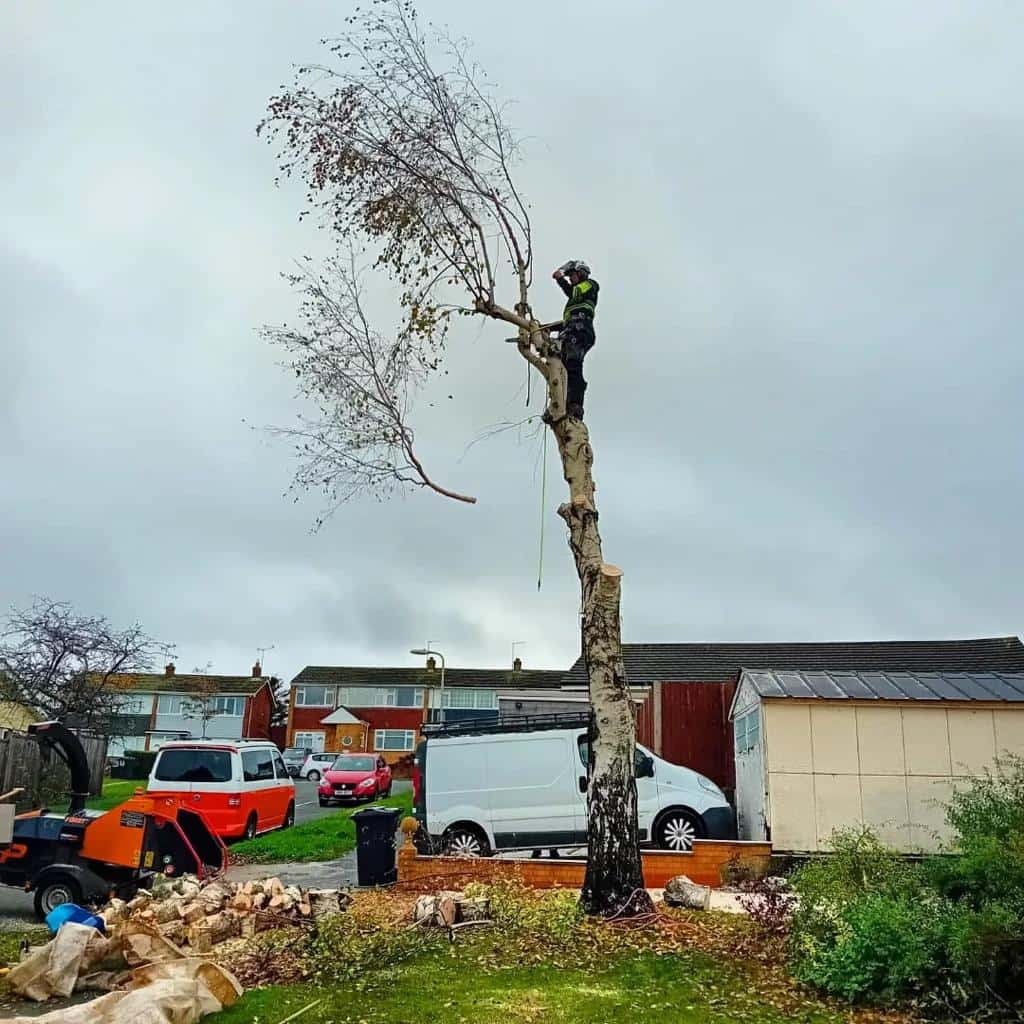Tree surgery is an essential practice for maintaining the health, safety, and aesthetics of your trees. However, the work doesn’t stop once the surgery is complete. Proper post-surgery care is crucial to ensure that your trees recover well and continue to thrive for years to come. At LM Tree Surgery Swanmore, we understand the importance of ongoing care and have put together this guide to help you maintain your trees after surgery, ensuring their long-term health and vitality in Liphook, Hampshire.
Immediate Post-Surgery Care
- Monitor the Tree’s Health: After tree surgery, it’s important to keep a close eye on the tree’s overall health. Look for signs of stress, such as wilting leaves, discolouration, or excessive leaf drop. These could indicate that the tree is struggling to recover and may need additional attention.
- Watering: Proper hydration is vital for trees to recover after surgery. Ensure that the tree receives adequate water, especially during dry periods. Water the tree deeply at the base, avoiding wetting the leaves, to promote strong root growth. However, be careful not to overwater, as this can lead to root rot and other issues.
- Mulching: Applying a layer of mulch around the base of the tree helps retain moisture, regulate soil temperature, and suppress weed growth. Spread the mulch evenly, leaving a gap around the trunk to prevent rot. Mulching also adds nutrients to the soil as it decomposes, supporting the tree’s recovery.
- Protecting the Tree: After surgery, your tree may be more vulnerable to damage from pests, disease, or environmental stress. Consider using protective wraps or barriers to shield the tree from harsh weather, animals, or accidental damage. Regularly inspect the tree for signs of pests or disease, and act quickly if any issues arise.
Long-Term Maintenance for Tree Health
- Regular Pruning: Even after surgery, regular pruning is essential to maintain the tree’s shape, remove dead or diseased branches, and promote healthy growth. Pruning should be done carefully and at the right time of year, depending on the species of the tree. Professional pruning ensures that the tree remains structurally sound and aesthetically pleasing.
- Fertilisation: Providing your tree with the right nutrients supports its long-term health. Fertilising in the spring and autumn can help replenish nutrients lost during surgery and encourage strong growth. Use a slow-release fertiliser that is appropriate for the type of tree and soil conditions in your area.
- Pest and Disease Management: Trees are susceptible to various pests and diseases, especially after surgery. Regularly inspect your trees for signs of infestation or infection, such as holes in the leaves, unusual spots, or visible pests. Early detection and treatment are key to preventing long-term damage. Consider consulting with a tree care professional for advice on the best pest and disease management practices.
- Soil Care: Healthy soil is the foundation of a healthy tree. Regularly check the soil around your tree for signs of compaction, poor drainage, or nutrient deficiency. Aerating the soil and adding organic matter can improve soil structure and fertility, providing the tree with a strong foundation for growth.
- Monitoring Growth: Keep track of your tree’s growth and development over time. If you notice any unusual changes, such as uneven growth or stunted development, it may be a sign that the tree is not thriving. In such cases, a professional tree care specialist can assess the situation and recommend appropriate measures.
Why Choose Professional Tree Care?
Maintaining a tree’s health after surgery requires expertise and dedication. At LM Tree Surgery Swanmore, we offer professional post-surgery care that ensures your trees continue to grow strong and healthy. Here’s why you should trust us with your tree care needs:
- Expert Knowledge: Our team of skilled tree surgeons has the experience and knowledge to provide the best care for your trees. We understand the specific needs of different tree species and can tailor our approach to meet those needs.
- Comprehensive Services: From pruning and fertilisation to pest management and soil care, we offer a full range of services designed to support your tree’s long-term health.
- Ongoing Support: We’re committed to helping you maintain your trees for years to come. Our ongoing support ensures that your trees receive the care they need at every stage of their life cycle.
Conclusion
Caring for your trees after surgery is crucial to ensuring their long-term health and vitality. By following the tips outlined above and enlisting the help of professional tree care services, you can keep your trees in excellent condition for many years to come.
If you’re in Liphook, Hampshire, and need expert advice or assistance with post-surgery tree care, contact LM Tree Surgery Swanmore today. Let us help you maintain the beauty and health of your trees, ensuring they continue to enhance your landscape for generations.
Call us on: 01428 770 498
Click here to find out more about LM Tree Surgery Liphook
Click here to complete our contact form and see how we can help with your trees needs.

